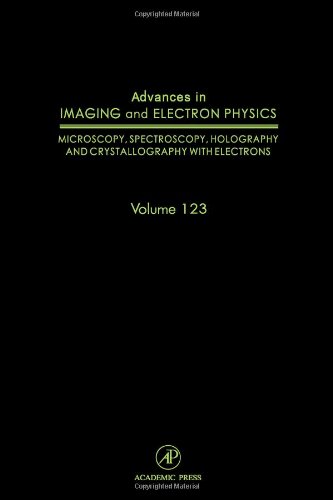

Most ebook files are in PDF format, so you can easily read them using various software such as Foxit Reader or directly on the Google Chrome browser.
Some ebook files are released by publishers in other formats such as .awz, .mobi, .epub, .fb2, etc. You may need to install specific software to read these formats on mobile/PC, such as Calibre.
Please read the tutorial at this link: https://ebookbell.com/faq
We offer FREE conversion to the popular formats you request; however, this may take some time. Therefore, right after payment, please email us, and we will try to provide the service as quickly as possible.
For some exceptional file formats or broken links (if any), please refrain from opening any disputes. Instead, email us first, and we will try to assist within a maximum of 6 hours.
EbookBell Team

4.1
80 reviews
ISBN 10: 0124112692
ISBN 13: 9780124112698
Author: Peter W Hawkes
Based on the topics consistently appearing in the search results (Microscopy, Spectroscopy, Holography, Crystallography, and Diffraction, all using electrons), here is a probable and detailed table of contents for a book with that title. It would likely be a collection of chapters, each written by an expert in a specific sub-field.
Part 1: Electron Microscopy and Imaging
Chapter 1: Transmission Electron Microscopy (TEM) Fundamentals
Electron sources and lenses.
Image formation: Bright-field and dark-field imaging.
Contrast mechanisms (diffraction, mass-thickness, phase).
Chapter 2: Scanning Transmission Electron Microscopy (STEM) and High-Resolution Imaging
The scanning probe concept.
Z-contrast imaging (HAADF-STEM).
Atomic resolution imaging.
Part 2: Electron Diffraction and Crystallography
Chapter 3: Principles of Electron Diffraction
Kinematical vs. Dynamical Diffraction theory.
Bragg's Law and the reciprocal lattice.
Diffraction patterns: Spot patterns, ring patterns, Kikuchi lines.
Chapter 4: Advanced Electron Crystallography
Convergent Beam Electron Diffraction (CBED) for symmetry determination.
3D Electron Diffraction and tomography.
Solving and refining crystal structures from electron diffraction data.
Part 3: Electron Spectroscopy
Chapter 5: Electron Energy Loss Spectroscopy (EELS)
Principles of inelastic scattering.
Core-loss and low-loss spectroscopy.
Mapping chemical composition and electronic structure.
Chapter 6: Energy-Dispersive X-ray Spectroscopy (EDS)
Principles of X-ray generation.
Elemental mapping and quantitative analysis.
Part 4: Electron Holography
Chapter 7: Principles of Electron Holography
The concept of holography and phase retrieval.
Off-axis holography with the electron biprism.
In-line holography.
Chapter 8: Applications of Electron Holography
Mapping of electric and magnetic fields at the nanoscale.
Imaging of atomic-scale structures and defects.
Applications in materials science and biology.
Part 5: Emerging and Correlative Techniques
Chapter 9: Coherent Diffraction Imaging (CDI) and Ptychography
Lensless imaging and the phase problem.
Iterative phase retrieval algorithms.
Applications with electrons.
Chapter 10: In-Situ Electron Microscopy and Dynamic Experiments
Studying materials and biological processes in real-time.
Ultrafast electron diffraction and time-resolved experiments.
application of holography in microscopy
electron holography
holography electron microscopy
application of holography
application
Tags: Peter W Hawkes, Microscopy, Spectroscopy